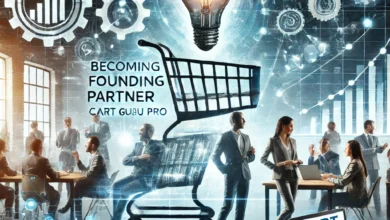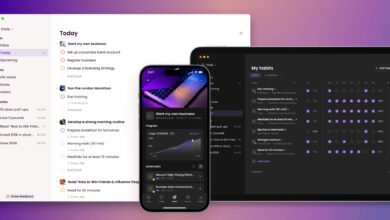SaaS Sales Strategy: Insider Tips For Winning More Deals


What Differentiates SaaS Sales From Other Industries?
Contrary to other industries where businesses make one-time sales and experience a short sales cycle, your SaaS business has a harder job attracting, converting, and nurturing clients. SaaS startups must craft engaging sales strategies and track a few Key Performance Indicators (KPIs). Software products are typically subscription-based, and you can forecast future sales more accurately thanks to monthly recurring revenue (MRR). On top of that, you must ensure your churn rates are as low as possible, meaning that you can’t afford a high number of canceled subscriptions. Selling SaaS requires excellent customer onboarding, offering clear instructions and guidance to buyers. If your onboarding experience is poor, your churn rates will possibly increase. The longer sales cycle and customer lifetime value (CVL) are also two KPIs you should track—how much money has one client generated in the duration of your business relationship?
But we are forgetting something, aren’t we? SaaS B2B marketing shouldn’t revolve only around features and technicalities. Can you integrate your technology into your clients’ existing systems? Your buyers must feel certain that you can overcome any hurdle or technical mishap, no matter how complicated it is. If you want to find out more about the process of integration, you may watch this insightful webinar.
The 3 SaaS Sales Models
1. The Self-Service Model
This model refers to low-priced services that have a larger sales volume. Spotify is a good example, as the service has low premium membership pricing, and users can sign up online without additional assistance. When your average selling price (ASP) is low, you can potentially bring in larger audiences and increase your revenue. No sales representatives have to assist customers to sign up and make a purchase; the process is fully automated. Other B2B marketing strategy examples utilize freemiums or free trials to lure customers.
2. The Transactional Model
This is the most common and scalable model in the B2B SaaS sales world. Typically, trained sales representatives contact potential buyers via phone or arrange in-person meetings. They then invest time in discussing with clients and understanding their challenges, pain points, and needs. The price of SaaS products here is usually higher, so salespeople must customize their features and offer personalized experiences. Tiered pricing is usually offered, and sales professionals are authorized to provide special discounts, collaborating with their marketing team to receive training and advice.
3. The Enterprise Model
This sales plan strategy refers to software sold at a low volume and high price. It’s usually niche software catered toward large corporations that require specialized technology and can afford the high prices. Marketing leaders and their teams work closely with company representatives and stakeholders for months to answer questions, provide detailed demos, and meet increasing demands. That’s why extensive customer service is required, while SaaS businesses need to sign contracts, provide invoices, and foster loyal relationships. The process for enterprise SaaS sales can take up to six months.
The Cycle Of Your SaaS Sales Strategies
Attracting Leads
Every successful SaaS sales strategy begins with crafting buyer personas. How can you do that, though? Customer profiling allows you to identify the different profiles of potential customers, categorize them, and create content based on their preferences. Then, you need to come up with engaging lead magnet ideas to attract clients to your website or landing page. Your magnets should be valuable and address interesting topics. You can utilize case studies, eBooks, webinars, blog posts, podcasts, and even social media posts. eLearning Industry can help you with your content marketing by crafting compelling eBooks, webinars, podcasts, and blog posts that establish thought leadership.
Outbound Prospecting
Sometimes, no matter how great your magnets are, generating new leads can prove demanding. Instead of waiting for clients to reach you, you can alter your SaaS sales tactics by contacting them directly. You can follow the method of cold calling or sending cold emails. But don’t start calling random people. Conduct research to identify which prospects are worth spending your time promoting your services. And, if you have trouble crafting appealing and attention-grabbing emails, eLearning Industry can help you create a powerful email marketing strategy.
Qualifying Leads
Have you ever heard of the BANT criteria? It’s a set of qualifying standards your high-performing marketing team should use to evaluate all potential buyers. Your SaaS sales strategy should include assessing everyone’s budgets, authority, needs, and timing. As you analyze prospects, you’ll notice that a few have a much higher probability of converting than others. Therefore, your sales representatives can focus their efforts on those and not waste their time on mildly interested companies. For instance, clients who have already tried a free demo or appear to be ready for a sales pitch are more valuable than those who simply opened an email.
Promoting Your Product
After you’ve gathered your qualified leads, the next step in the software sales process is to provide a demonstration of your solution. In some cases, SaaS companies offer free trials and unlimited guidance to potential buyers. However, it may be better to provide a recorded demo of your software. Personalize your B2B content marketing approaches based on the unique needs and challenges of each business. You can arrange meetings with each prospect and run live demos, leaving some extra time for any questions. You may also incorporate case studies and testimonials into your presentation to showcase expertise.
Winning Over Objections
Developing a sales strategy typically involves handling objections. Some clients may complain about the price, say that they are not ready to commit to a contract, or even explain that they already have a contract with a competitor. How do you respond? A good way to debate the price objection is to veer the conversation back to your software’s features and the great ROI other companies have experienced. If clients are not ready to invest in a full contract, you can offer them monthly billing so they can cancel their subscription at any point. Lastly, if they already have a provider, offer them a discount or ask what they like most about their collaborator so you can improve yourself in the future.
Closing Deals
Your promotional campaign is successful only once you start closing deals and boosting sales. But it’s not that simple. Even after they’ve paid for your service, you need to onboard and train them. Your customer service should be excellent at responding on time and providing guidance. If they are close to signing a contract but appear to be doubtful, offer them an extra discount to convert them more easily. Be flexible with your pricing, as it can help you with your SaaS deals. You may need to come up with engaging tactics to assist your team’s product marketing sales enablement efforts.
Nurturing
The level of your customer service and overall interaction with customers plays a pivotal role in maintaining your clientele. Maybe you have extra services and features your recent buyers want to upgrade to once they’ve experienced your spectacular service. You can invest in building self-service portals where each client can solve their problems or create queries for your assistance. You may even utilize the benefits of AI in marketing and incorporate chatbots that answer simple questions. Surely, your salespeople will need to take care of more important matters.
The Necessity Of Lead Generation
It has been quite clear up until this point that effective lead generation strategies help you segment your audience based on their preferences and create relevant and interesting content. You may use various SaaS content writing examples to craft content that resonates with your audience and establish thought leadership and credibility. When your content provides value and educates people, your brand awareness increases and potential buyers start trusting your expertise. Additionally, lead generation tactics help you gather insights and data regarding your audience, including demographics, feedback, and online behavior. This way, you can build a better B2B SaaS sales process and tailor your services accordingly. Making every interaction feel personalized makes them feel unique and important. Ultimately, your B2B software sales increase significantly as you focus on the prospects who are ready to buy from you. If you want to learn more about lead generation tactics, make sure to read this eBook.
The Tremendous Importance Of Lead Qualification
As already discussed, lead qualification helps your SaaS sales strategy save money by allowing sales representatives to focus solely on clients with a high probability of conversion. Therefore, you filter out people and businesses who may waste your time. Generating quality leads saves you time and helps you improve your SaaS sales cycle. You don’t have to keep talking to customers who keep shutting the door on you. But how can you improve your lead qualification process with automation? One of the top applications of Artificial Intelligence in the B2B world is chatbots, as well as other bot types. Chatbots can identify website visitors whose interest is high and inform salespeople that they should pursue them. Moreover, AI can track online users, analyze their profiles, identify their needs and preferences, and provide insights into their online behavior. Lead capture tools can also automate certain time-consuming tasks, like sending follow-up emails and surveys and reminding you to call potential clients. However, delegating email copywriting entirely to AI may not be good enough; you should improve your direct response copywriting skills to make every interaction count.
SaaS Sales Strategies That Increase Revenue
1. Outbound Marketing
This B2B SaaS sales strategy works great when your target audience isn’t aware of your product or that there is a solution to their pain points. Your promotional range is typically wider, as you may contact many potential customers you are not sure would be interested in your SaaS solution. You may use cold calling, cold emailing, digital advertising, and trade shows. Additionally, your content marketing ideas should be creative and unique, talking about common industry problems and how your software can solve them. However, don’t overextend your reach and start calling everyone in the book. Use analytics and data to identify members of your audience that appear to be interested in your offerings. You don’t want to annoy people who were never curious about your SaaS software in the first place. eLearning Industry can offer you various outbound marketing services, including banner ads. Click the link if you want to know more.
2. Inbound Marketing
On the other side of the coin is inbound marketing. This SaaS sales model helps clients find you on the internet instead of leaving you knocking on doors. Nevertheless, it takes a lot longer for an inbound marketing strategy to succeed, and it may not be ideal for businesses wanting to achieve quick sales. You need to invest in valuable and educational content creation and content marketing for B2B. Also, you should develop your SEO skills and keep optimizing your content by adding relevant keywords and phrases. This is the only way customers will find your website and consider your SaaS services during the consideration stage of the sales funnel. You can use blog posts, webinars, whitepapers, case studies, infographics, and podcasts to establish thought leadership and prove credibility. At the same time, you can utilize social media to promote your content across different platforms and grow your organic following. eLearning Industry can help you facilitate a crafty inbound marketing strategy. Get in touch with our marketing experts to find out more.
3. Personalized Marketing
Statistics reveal that 72% of consumers won’t purchase from providers who do not offer personalized marketing tactics. So, you understand why audience segmentation is so crucial. You should never stop researching your audience, their preferences, and their online behavior to notice changes in their requirements. Your marketing plan template should include a combination of inbound and outbound marketing tactics for your SaaS sales strategy to attract leads and make them feel like your software is made for them. Based on the needs of each prospect, you can personalize your messaging in your retargeting ads and email sequences. Large conglomerates like Netflix and Amazon use algorithms that select new releases and products based on each customer’s viewing history. As a result, people’s engagement increases as they realize your SaaS business cares about their needs.
4. Third-Party And UGC Content
The distrust toward businesses that try to sell their products is real. That’s because companies and their SaaS sales teams used to utilize gimmicks and fake promises that never came to fruition. Consequently, buyers are now more fearful than ever of trusting your word. But what if you used your clients’ reviews and testimonials? Everyone searches for reviews before buying something online anyway. So, locate the triumphant reviews and social media comments your clients have left about your services. Expert marketers who provide content marketing services, like eLearning Industry, can help you craft engaging campaigns based on your customers’ experiences. Yelp and TrustPilot are excellent review sources, with many buyers uploading pictures, too. Aside from that, you can conduct detailed case studies focusing on specific client cases that were quite tricky at first but you managed to overcome all obstacles.
5. Craft A Brand Story
Why is your brand story considered a SaaS sales strategy and not a tactic? Aligning your sales and marketing efforts with your brand story is an ongoing process. It’s not only about writing a few words about your company on your website. Selling SaaS solutions is a slow procedure, and content marketing for small businesses helps you establish your unique brand identity and curate the material your target audience consumes. Maintaining the same brand identity across all team members is essential, starting with your leadership. They are the ones agreeing on your story, while your designers have to communicate it successfully through your website, social media posts, and landing pages. Then, your sales representatives and marketing experts must craft their sales pitches and promotional campaigns while staying true to your identity. So, extensive training is mandatory, and your sales collateral should be uniform.
Winning Tactics To Include In Your SaaS Sales Strategy
1. Free Trials
SaaS products are usually complex and require first-hand experience before clients decide to pull the plug and make a purchase. One magnificent way to shorten the SaaS sales cycle is to offer free trials for short periods of time. Data shows that 7 or 14 days is the perfect duration for these trials, as they push companies to make the most of the offer. However, complex services designed to accommodate enterprise SaaS sales models may require longer trial periods of up to a month for potential buyers to fully understand the functions and benefits of your solution. Another option you have is freemium, which offers completely free but limited access to your software. Yet, not every company or product can benefit from this solution, so analyze your options carefully before making a decision.
2. Provide Demos
It’s crucial that a SaaS provider knows how to create effective and informative demonstrations to improve your marketing results. It’s easy to get carried away and talk extensively about your product’s features instead of its benefits. A SaaS growth strategy should focus on providing personalized demos based on each client’s pain points and needs. You can do that by researching each potential buyer extensively or meeting with them. Start by addressing their issues and highlighting the advantages of your SaaS solution. Surely, you can mention some of the technical aspects and explain to buyers how they can use them. After the meeting is over, your customers should have a clear understanding of how they can use your software to overcome their challenges and improve their structures.
3. Upsell And Cross-Sell
What differentiates excellent from mediocre digital marketing skills is the ability to retarget your buyers through upselling and cross-selling. This method is not a way to increase revenue without adding anything extra to your customers’ experience. On the contrary, you reach out to your buyers to offer them extra services. This is especially beneficial for SaaS companies that offer tiered pricing. So, let’s say one client purchased the bottom tier of your software, which has the fewest features. You can wait for a reasonable number of weeks to pass and contact them to ask for feedback and whether they would like to upgrade their services. Once again, you must stick to the benefits.
4. Communicate And Gather Feedback
SaaS sales representatives and providers should never grow complacent, no matter how successful their product is or how much money it generates. There is always room for improvement as new software enters the market daily. Make it a mission of your SaaS sales strategy to ask for feedback every time someone purchases your services. You can either contact them by phone or send out satisfaction surveys. Just give them ample time to experience your software before contacting them. Actively listen and address common complaints by improving them. You must show that you respect and value your customers’ opinions.
5. Use A CRM
Due to the long sales cycle of SaaS products, customers are more demanding than in other industries. They require a deep level of professionalism and care from your side. Establishing a customer relationship management (CRM) system ensures you don’t miss any important details or talking points. As the future of digital marketing depends on excellent customer service, noting down crucial information helps you know each client better and understand their needs. Additionally, these systems allow you to record calls and insert notes during these discussions. Lastly, CRM systems segment your target audience into smaller groups with similar characteristics.
6. Offer Annual Pricing
Have you ever measured your content marketing performance and noticed that while your revenue is increasing, your churn rates are rising, too? Maybe it’s because you have way too many monthly subscribers who experience your product for a short while and then cancel their subscriptions. If that’s the case, you should think about utilizing annual pricing, a SaaS sales billing strategy that reduces churn and allows you to predict your annual revenue. So, you have more freedom to arrange growth strategies and make serious investments. In addition, when your client base is stable, you can use their feedback to keep improving your services. If you have trouble convincing businesses to sign annual contracts, you can offer them discounts and special offers.
How Do You Even Start Crafting Your SaaS Sales Strategy?
The first step to crafting a successful SaaS sales strategy is to choose one of the three models mentioned earlier, depending on the nature of your service. The next step is to identify your audience by segmenting them and crafting buyer personas. For each persona, you should ask yourself four questions: who are they, what problems are they experiencing, how can your software help them, and what results can they expect? In other words, you should establish your business’s unique selling proposal (USP). A USP can improve the performance and work of your team by helping you understand your targets. When you know who you’re talking to, you can provide them with the tools they need. Next in line is your sales playbook. It includes email templates, closing techniques, cheat sheets, pricing guidelines, sales collateral, call scripts, and competitor information.
Furthermore, you should train your sales representatives adequately and set some revenue goals for them. Make sure the objectives you set are realistic so your sales team feels certain they’ll reach them. Your customer service level should be pristine as well since buyers feel safe when they can get the answers and guidance they require. Now, let’s say you’ve done everything up to this point. How do you know whether your software sales strategy is working? Setting your KPIs and metrics will assist you in identifying weaknesses and working toward improving them.
Key Takeaway
Building a winning SaaS sales strategy that attracts high-converting leads and increases revenue requires intuitive research and marketing to create content that resonates with potential clients. Marketing has various different doors you can open, including inbound, outbound, personalized, and third-party. But a marketing strategy is only the beginning of your promotional journey. You must also pick your tactics that will bring in paying customers. Buyers love quality content like webinars and blog posts that add value to their lives.
If you have trouble stuffing your email marketing list, you may need to utilize gated content to attract customers and get their contact details. Some companies, for instance, invest a lot of time in building a functioning and useful YouTube channel. You can do that, too, and find ways to get people to subscribe to your channel. Where will the links from your videos lead? Your webpage, of course. But if your webpage is boring and lacks essence, you must optimize your landing page for lead generation.
Source link





